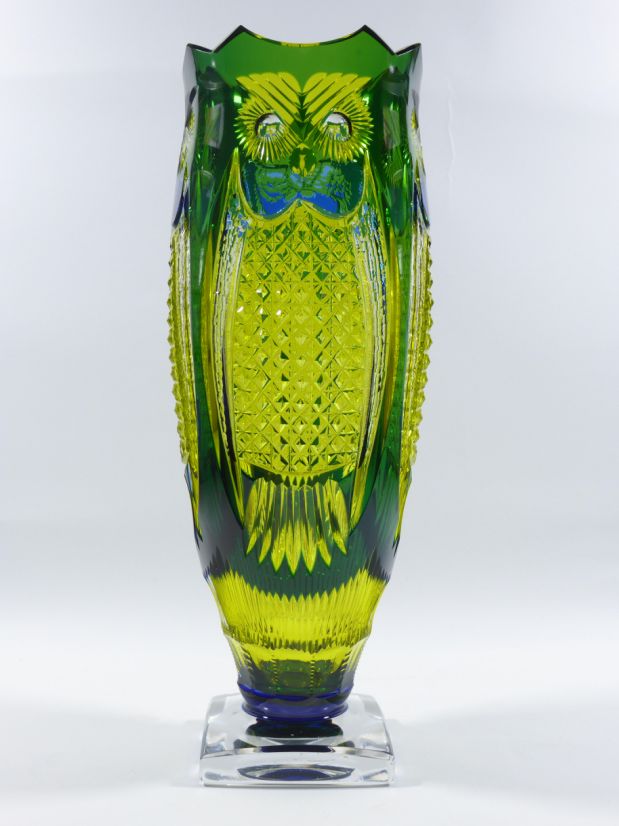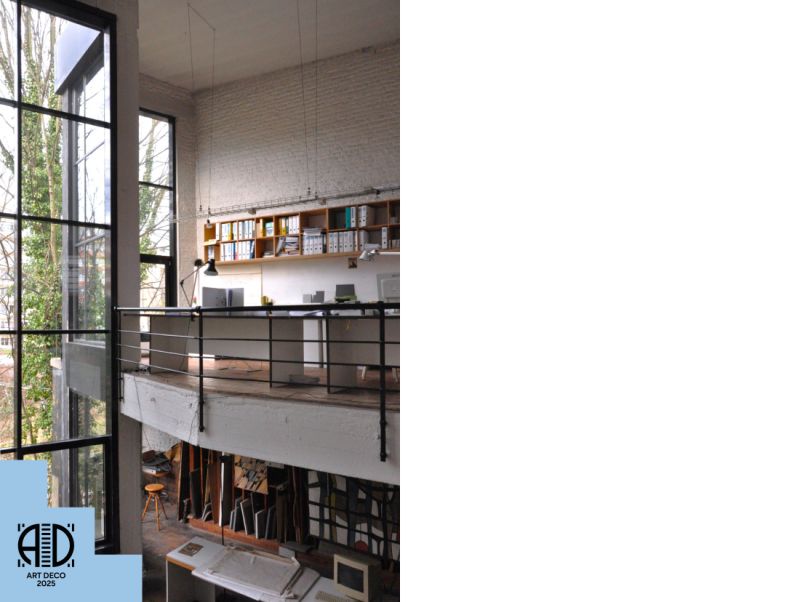#modernity2025 #artdeco2025
In 2025, Brussels is paying tribute to Art Deco with a colourful programme presented jointly by Urban and visit.brussels, in collaboration with Patrimoine & Culture non-profit organisation and their many partners.
To mark the occasion, Urban is showcasing themes that tie in with this Art Deco-inspired programme throughout the year.
This second focus showcases the art of glass, as a prelude to the opening of no fewer than three exhibitions in the capital dedicated to this unique and precious material.
From the flowing lines of Art Nouveau to the geometry of Art Deco
The First World War heralded the end of Art Nouveau, the style launched by Victor Horta in 1893 and subsequently widely imitated both in Belgium and abroad.
The war caused extensive material damage and a shortage of raw materials and labour. As a result, architectural styles such as Art Nouveau, which featured a high degree of complexity and required significant manual labour, were no longer reconcilable with economic realities.
In addition, the trend was moving towards increasing stylistic austerity, favouring geometric motifs and straight lines. The first steps in this direction were already visible at the 1900 Paris World's Fair, where German-speaking countries and artists in particular stood out for their bold, clean lines. This trend continued in 1902 at the Turin World's Fair, the 'Prima Esposizione Internazionale d'Arte Decorativa Moderna'. The seeds of Art Deco were therefore sown long before 1925!
Following the construction fever that gripped Brussels in the late 19th and early 20th centuries, the pace of urban development slowed. Housing continued to be built, mainly in the capital's suburbs, with both private homes and a growing number of apartment blocks. Many of these homes were fitted with stained-glass windows, both inside and out.
A profusion of workshops
Between the wars, Brussels was home to dozens of master glassmakers' workshops. The best known were those of Frans David Ferdinand Crickx and Florent-Prosper Colpaert, both housed in remarkable and now listed Art Deco buildings. And it is no surprise that these workshops were located in fast-growing neighbourhoods, as close as possible to their potential customers: Crickx at no. 96 rue Ferdinand Lenoir in Jette and Colpaert at no. 33-35 rue Monrose in Schaerbeek.
→ Discover these workshops through the inventory of built heritage:
Public orders
In the public buildings category, the monumental stained-glass window designed by Crickx in 1938-1939 for the 'Ecole La Roue' in Anderlecht is well worth a visit. The work, depicting children at play, is a fine example of the symbiosis between stained-glass iconography and the architecture in which it is set. While the architect in charge of monumental stained-glass windows generally ensured that this was the case, it was less often true of private homes. In these homes, the owners, often the wife, usually chose the stained-glass windows to be placed in a particular room from mass-market commercial catalogues.
It is interesting to note that at La Roue, Crickx once again used the technique of painting on stained glass, a process abandoned by Art Nouveau with the advent of all kinds of special glass, particularly American glass. With his stained glass, Crickx reconnected with the tradition of the 19th century.
→ Discover 'Ecole La Roue' in photos on Media Urban
Stained-glass windows for private customers
In private homes, such as the Colpaert residence and workshop in Schaerbeek, most of the stained glass is decorative and geometrically inspired. Repeating patterns such as triangles and circles were often chosen to enhance the bright, minimalist interiors of avant-garde architects. With its intense colours, American glass remained popular, and its lower production costs meant that it could be used for entire wrought-iron entrance doors. Cathedral glass, which is not transparent, was also widely used to provide the privacy needed by residents.
Colourful shopfronts
Brussels also boasts a host of beautiful Art Deco shopfronts. They include 'L'Étoile Verte', at no. 38 Rue Blaes, and the beautifully preserved plant-decorated windows on the side facade of the 'L'Espérance' tavern. Glass not only attracts the eye, it also creates a sense of intimacy inside.
Art Deco Brussels 2025 programme
Throughout the year, the Art Deco Brussels 2025 programme offers the public the opportunity to learn more about the forms and materials typical of this movement, particularly its treatment of glass, through three exhibitions that open in spring.
EXHIBITION • The "Stained Glass 1925-2025. Crossed Glances"
From 4 April to 18 October, the Fondation pour le vitrail Pierre et Marcelle Majerus Nizet is opening its workshop for an exhibition that brings together high-quality Art Deco stained glass, some never before exhibited, with works from 1945 to the present day. The programme includes guided tours and glass-cutting demonstrations.
→ More informationEXHIBITION • The "Opalescents" at the Centre Albert Marinus
Opening on 18 April at the Centre Albert Marinus in Woluwe-Saint-Lambert, this exhibition takes visitors into the fascinating world of opalescent glass, with a selection of almost 200 creations made during the Art Deco period from this glass with its slightly milky, delicately bluish appearance. These creations come from the private collection of Philippe Decelle and are by the most prestigious French glassmakers, such as René Lalique, as well as artists from Belgium, England and Bohemia. The exhibition is accompanied by a book written by specialists.
→ More informationEXHIBITION • The "Art Deco 'The Golden Age of Val Saint Lambert'"
From 5 May to 28 September 2025, Foundation Madeleine 7, housed behind a magnificent geometric stained-glass facade by architect Léon Sneyers, takes visitors back to the golden age of the Cristalleries du Val Saint Lambert. This age, which coincided with the inter-war period, saw the creation of pieces of exceptional quality, from dinner services to decorative objects, lighting fixtures and vases. The exhibition, which is accompanied by a publication, features works by Joseph Simon, Modeste Denoël and Philippe Wolfers, among others.
Visits by reservation, via phone or email.
→ More information




